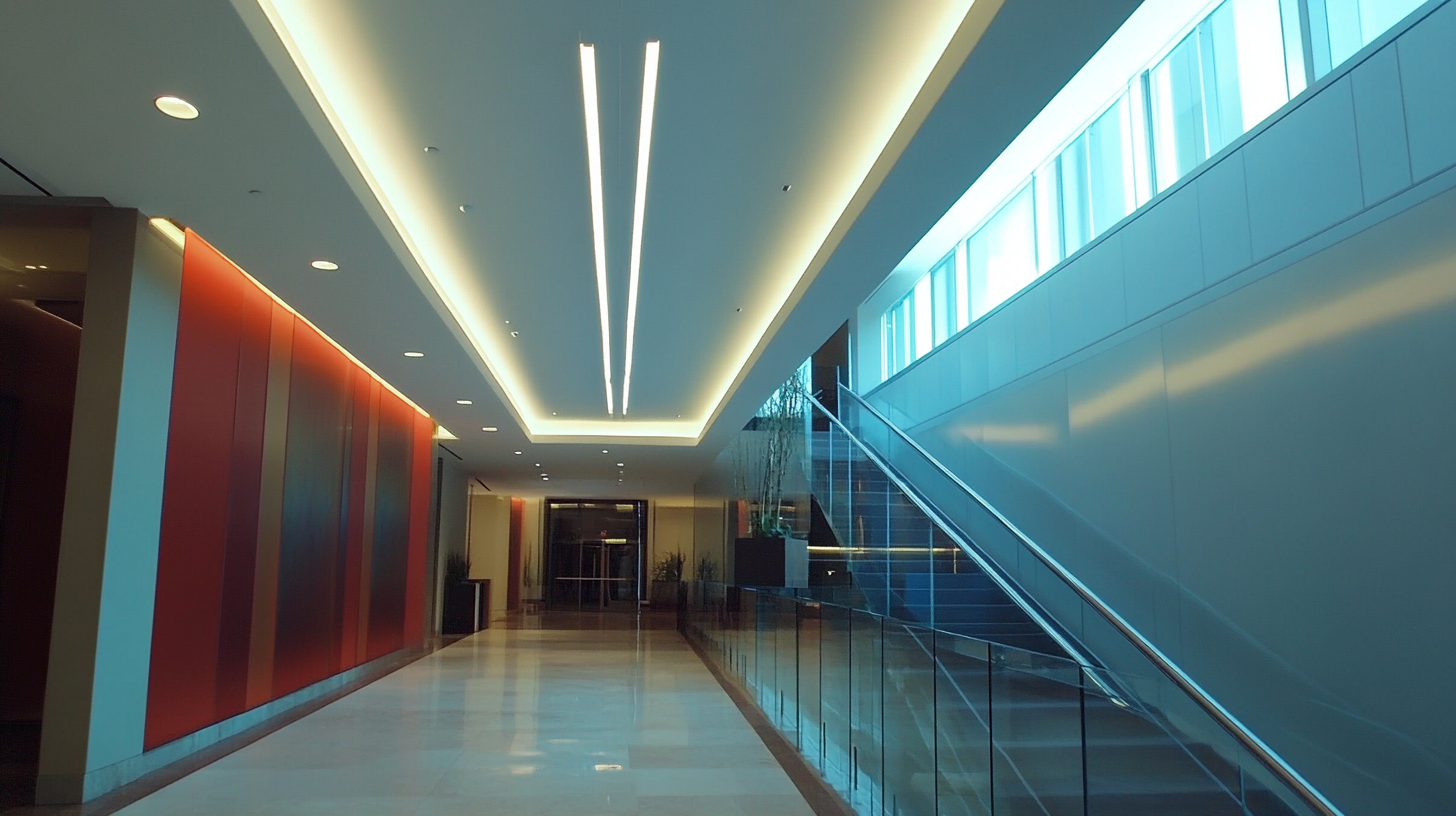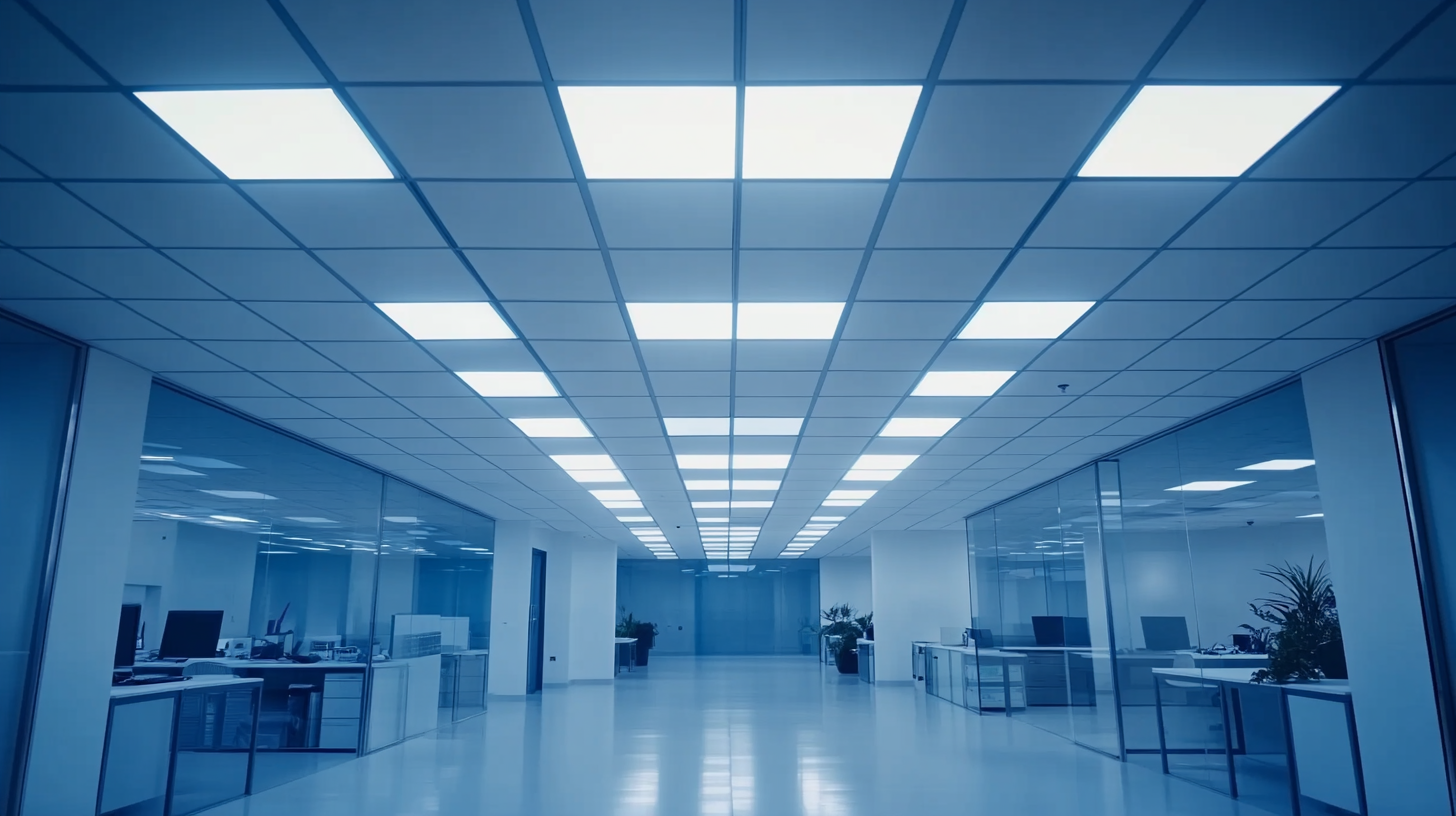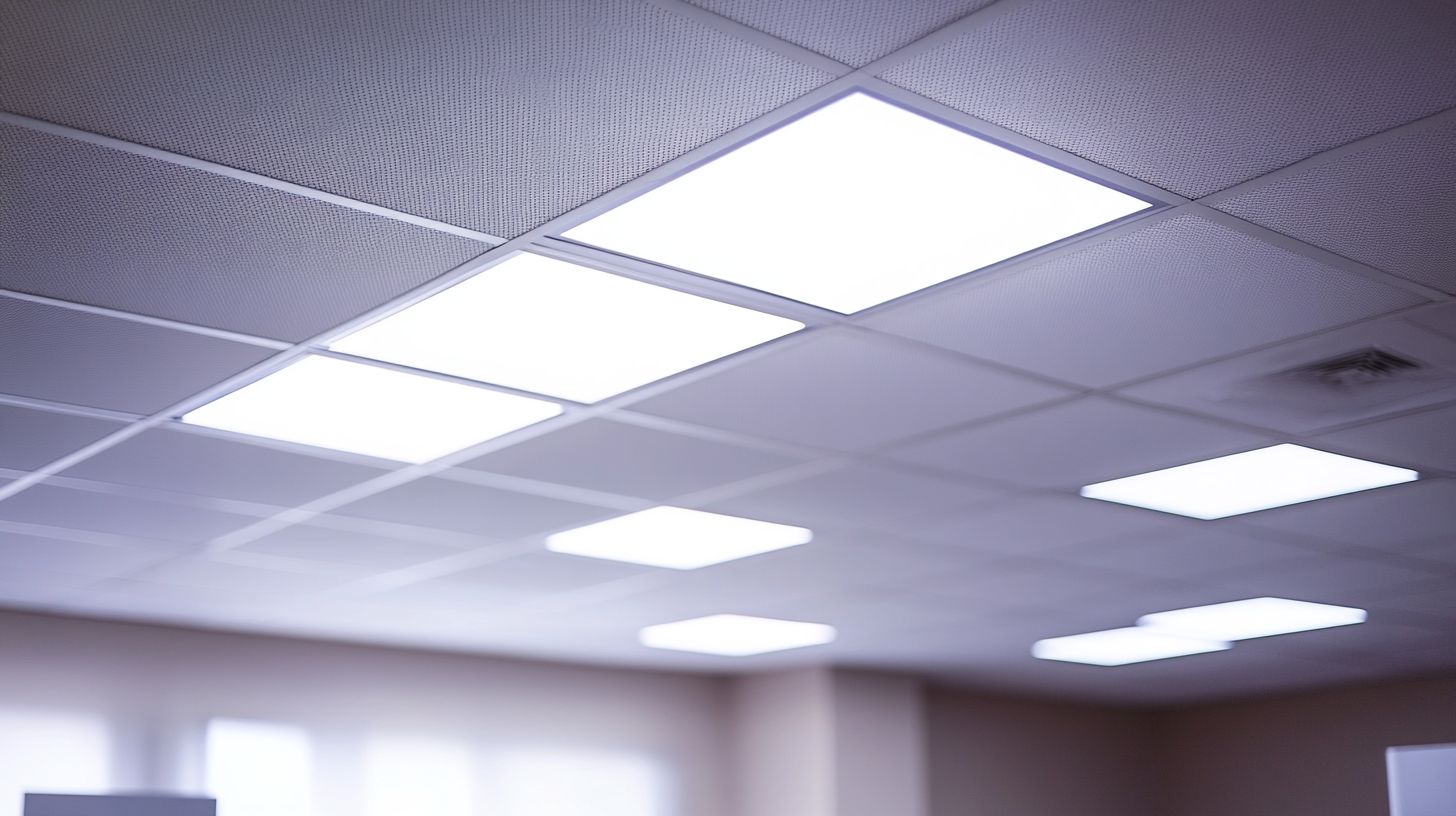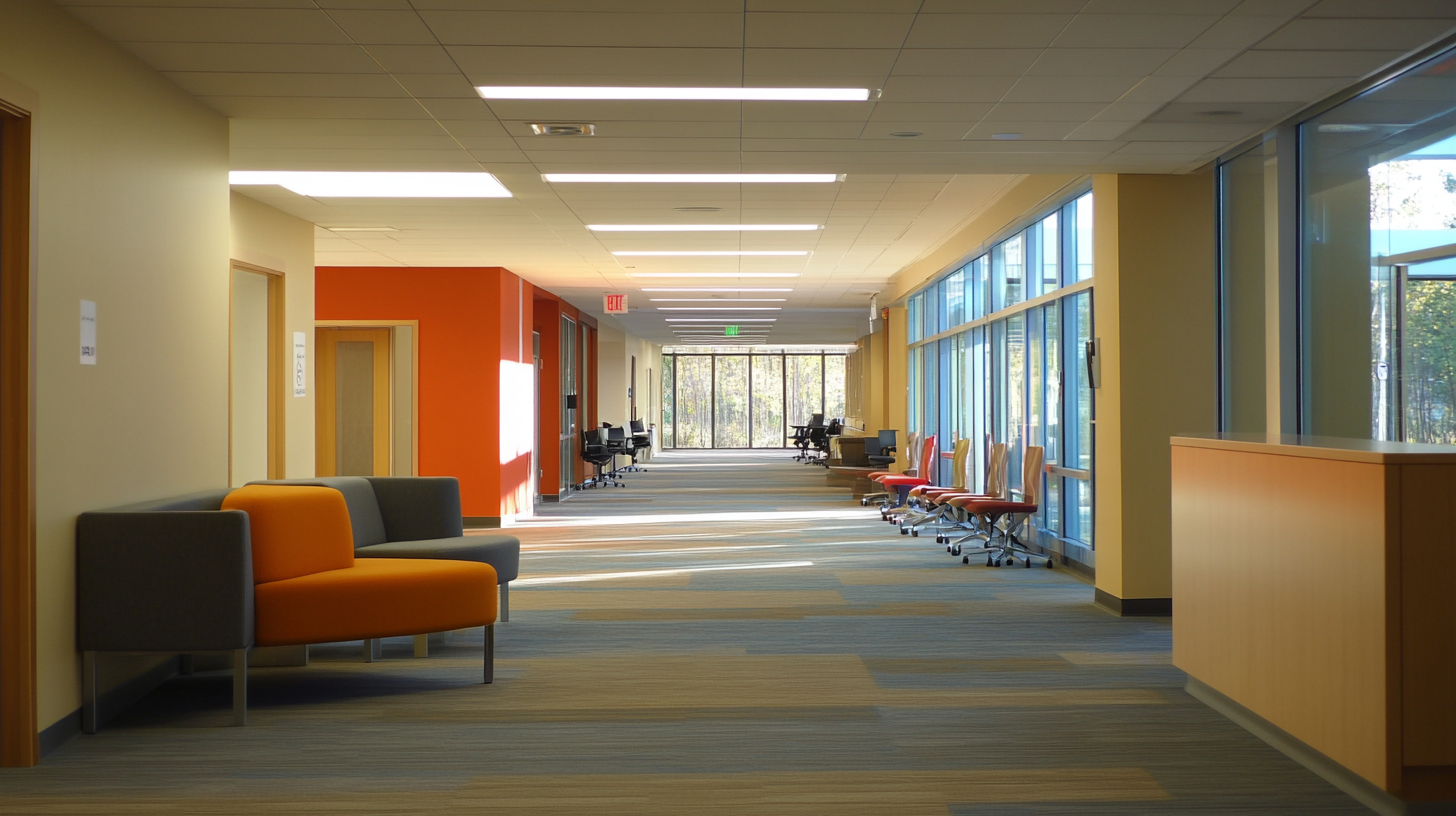Maximizing Office Lighting Efficiency and Maintenance Costs Through Smart Solutions
In this rapidly changing work environment, efficient office lighting has grown in importance for enhancing productivity and comfort. Smart solutions for office lighting are of utmost importance considering companies' efforts to contain operational costs. Typical lighting setups waste energy and can lead to increased upkeep costs, thereby reducing overall efficiency. With the adoption of smart solutions and their management, organizations can minimize their ecological footprint and maintenance costs while ensuring a more inviting and efficient workspace.
Smart lighting solutions have enabled companies to control office lighting in ways that were previously inconceivable. Adjusting brightness based on natural light levels, automated systems; energy-efficient LED fixtures―these are just some of the available options. In this blog, we will discuss diverse strategies to increase not only the efficiency of office lighting but also reduce maintenance challenges, rendering workplace illumination a sustainable and economically viable option. Smart solutions in office lighting can change everything.

Understanding the Impact of Office Lighting on Employee Productivity and Well-Being
Lighting in an office is not only important for the required work environment but also effects the productivity and well-being of the employees. Many studies suggest optimal lighting improves focus, alleviates fatigue, and brightens mood which has made organizations feel the idea of investing in intelligent lighting systems. These systems can be automatically adapted to natural light availabilities in such a way that office spaces are always properly lit yet energy costs related to these spaces are reduced. The environmental impact of office buildings has always been a priority as the construction industry alone accounts for approximately 37 percent of the world's total carbon emissions. Introduction of smart lighting solutions can give companies an energy consumption reduction of up to 70 percent which translates into lower emissions and thus meeting sustainability parameters on the globe. Melbourne's Slattery consulting firm is one such organization with becoming an even more sustainable building practice that increases its aesthetic worth and operational efficiency. Besides the environmental benefits, proper lighting will undoubtedly have a huge impact on employees' performance. Effective lighting attracts people and increases productivity while generating a healthy work environment. All organizations are keen to make employees healthier while keeping the operational cost balanced. Transitioning to smart lighting solutions is becoming the acceptable strategy in this area of balancing cost and environmental responsibility.

Evaluating the Cost-Effectiveness of LED Technology vs. Traditional Lighting Solutions
In recent years, this area has shifted towards LED and light-emitting diodes in office environments. It has gained attention for their energy efficiency along with maintenance costs. As per the U.S. Department of Energy, LED fixtures can be 75% more efficient than the incandescent hot bulbs. This phenomenally reduced energy consumption will thus help in two things: not only reducing electricity costs, but also ensuring a greener workspace with lesser greenhouse gas emissions.
Initial investment costs have often been hot topics for discussion when comparing the price-effectiveness of LED technology and traditional lighting measures. However, studies show that a larger amount of savings may be achieved in the long term despite the higher initial capital costs of installing LEDs. As per the Average Lifespan of LED Bulb: 25000 Hours versus 1000 Hours About Incandescent by the National Renewable Energy Laboratory, the average life of an LED bulb is about 25000 hours, while that of an incandescent bulb is just about 1000 hours. This fact reduces the frequency of replacement and related maintenance costs, thereby making LEDs a cost-effective option for businesses that want to optimize their lighting expenses.
As smart technology continues to advance, so does the incorporation of LED lighting with control; achieving even better efficiency may be realized. A recent study by the Lighting Research Center showed that smart lighting systems can reduce energy usage by 30% to 50%, leading to significant cost savings. These savings enable offices to improve lighting efficiency while ensuring that the workspace makes an environment-friendly work while not being overworked on operational costs.

Leveraging Smart Controls for Enhanced Lighting Management and Energy Savings
Productivity improvement and the well-being of employees all depend a lot on effective lighting management which is important in today's fast-paced office environments. Of course, the most amazing transformation that intelligent and smart controls can provide the organization is improving energy savings and efficiency over conventional solutions in office lighting. And this might even allow the lighting solutions to tailor spaces throughout the workday to the specific needs of each area.
Smart controls would allow for adjustments based on occupancy, natural light levels, and time of day. A good example would be indoor motion sensors that pick up when the area is no longer occupied and turn off the lights automatically. These avoid light taps by people. Moreover, combined with daylight harvesting technologies, they can be used to dim or brighten lights according to the level of natural sunlight received to optimize energy usage and establish better comfort for the worker.
As with any intelligent and practically outfitted lighting system, another benefit relates to all the data logging and interpretive readings that accompany those systems to help calculate energy consumption behavior. With this, facility managers can make informed decisions about lighting schedules, spaces that need interventions, and pinpointing the right time intervention. Maintenance practices would be even more focused, increasing lighting fixture lifespan, improving the overall maintenance cost of the organization, and freeing up space. All these organizational years would turn out to be maximally efficient for office lighting in some promising potentialization of smart-the-smart office technology.

The Role of IoT in Streamlining Office Lighting Maintenance and Reducing Downtime
In the fast-evolving world of business today, maximizing the efficiency of office lighting has become imperative not only to support productivity but to also save on maintenance costs. The advent of IoT has brought major changes in how businesses deal with their office lighting systems. In fact, MarketsandMarkets forecasts the smart lighting market to grow from $3.4 billion in 2020 to $11.4 billion in 2025, thus showing greater dependence on technology that optimizes lighting solutions.
IoT devices enable the real-time monitoring of lighting systems, giving facilities managers insights into energy consumed and giving early warnings of quite a few potential issues before they can get out of hand. The American Council for an Energy-Efficient Economy (ACEEE) states that smart lighting could reduce energy consumption by 50%. Hence the proactive approach not only reduces energy costs significantly, but also maximizes the life of lighting fixtures, thus keeping maintenance costs low.
Furthermore, predictive maintenance enabled by IoT can dramatically reduce the downtime associated with lighting failure. Research from Deloitte states that businesses can see a drop in maintenance expenses due to IoT by as much as 30%-40%. By means of monitoring usage through sensors and data analytic techniques, companies can schedule maintenance according to actual needs rather than a static timetable, ensuring that lighting systems maintain efficiency and performance when they are needed most. This unconventional method of maintenance further cements IoT's role as a backbone toward smarter and more sustainable office spaces.
Analyzing Industry Trends: How Smart Lighting Solutions Are Shaping the Future of Workspaces
The rapidly changing scenarios of working environments have recently shown an unmistakable trend in remote and hybrid work across industries. This difference is not only manifesting in the conduct of work but also in the design and brightness produced in space. So further is dotting the expectations most about the global smart space, which, according to estimates, will peak at around the insane cost of $15.1 billion in 2024 and $37.23 billion by 2032. Such projections suggested that turning spaces intelligent through smart lighting would be something that end users would expect from their workspaces.
It is becoming an even more exciting approach to achieving good costs in energy efficiency and energy-saving maintenance because of smart lighting systems. Not just aesthetics to be achieved, but also utilize high-tech such as ultra-wideband radar and many others to engage better functionalities and user experience. Promised optimization in energy use with these would make workplaces not only brighter but also more sustainable.
In addition, some discussions regarding smart lighting in fora bring out topics such as carbon neutrality, health, and AI-based design. Not a trend, it's the new reality for the future of workspaces - coinciding with society's ever-increasing digitalization and health-consciousness. As the develop workplace keeps changing, more and more important will the role of smart lighting become in the efficiency with which it operates and the cost of maintenance it incurs, as well as a new marker for how we illuminate our spaces.
